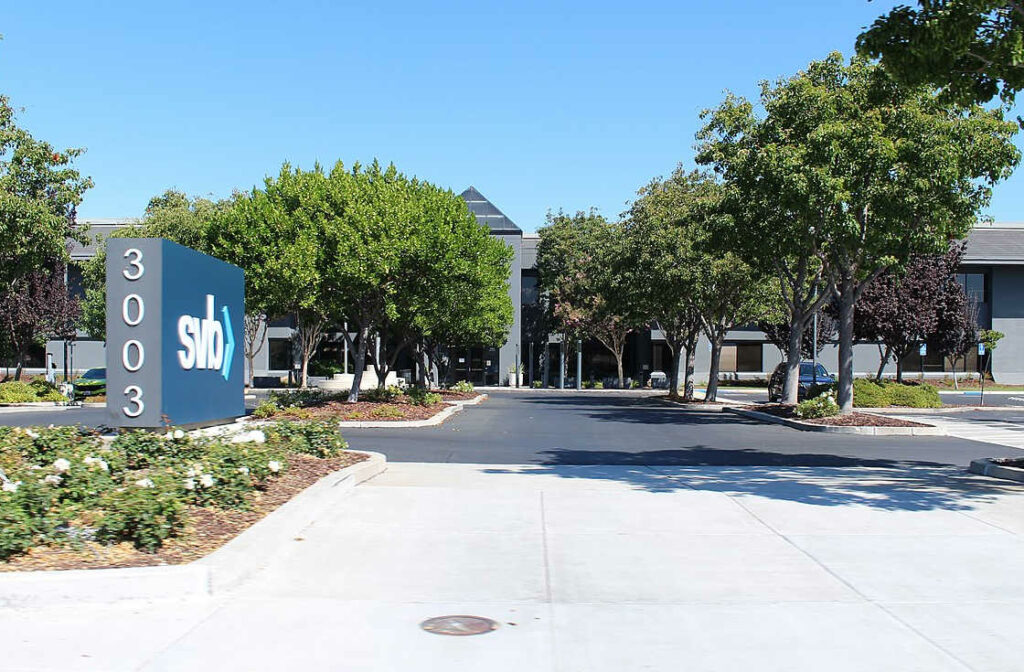
Silicon Valley Bank, which catered to the tech industry for three decades, collapsed on March 10, 2023, after the Santa Clara, California-based lender suffered from an old-fashioned bank run. State regulators seized the bank and made the Federal Deposit Insurance Corporation its receiver.
SVB, as it’s known, was the biggest U.S. lender to fail since the 2008 global financial crisis – and the second-biggest ever.
We asked William Chittenden, associate professor of finance at Texas State University, to explain what happened and whether Americans should be worried about the safety of their financial system.
Why did Silicon Valley Bank collapse so suddenly?
The short answer is that SVB did not have enough cash to pay depositors so the regulators closed the bank.
The longer answer begins during in the pandemic, when SVB and many other banks were raking in more deposits than they could lend out to borrowers. In 2021, deposits at SVB doubled.
But they had to do something with all that money. So, what they could not lend out, they invested in ultra-safe U.S. Treasury securities. The problem is the rapid increase in interest rates in 2022 and 2023 caused the value of these securities to plunge. A characteristic of bonds and similar securities is that when yields or interest rates go up, prices go down, and vice versa.
The bank recently said it took a US$1.8 billion hit on the sale of some of those securities and they were unable to raise capital to offset the loss as their stock began dropping. That prompted prominent venture capital firms to advise the companies they invest in to pull their business from Silicon Valley Bank. This had a snowball effect that led a growing number of SVB depositors to withdraw their money too.
The investment losses, coupled with the withdrawals, were so large that regulators had no choice but to step in to shut the bank down to protect depositors.
Are the deposits now safe?
From a practical perspective, the FDIC is now running the bank.
It is typical for the FDIC to shut a bank down on a Friday and have the bank reopen the following Monday. In this case, the FDIC has already announced that the bank will reopen on March 13 as the Deposit Insurance National Bank of Santa Clara.
At the end of 2022, SVB had $175.4 billion in deposits. It’s not clear how much of those deposits remain with the bank and how much of those are insured and 100% safe.
For depositors with $250,000 or less in cash at SVB, the FDIC said that customers will have access to all of their money when the bank reopens.
For those with uninsured deposits at the Silicon Valley Bank – basically anything above the FDIC limit of $250,000 – they may or may not receive back the rest of their money. These depositors will be given a “Receiver’s Certificate” by the FDIC for the uninsured amount of their deposits. The FDIC has already said it will pay some of the uninsured deposits by next week, with additional payments possible as the regulator liquidates SVB’s assets. But if SVB’s investments have to be sold at a significant loss, uninsured depositors may not get any additional payment.
What was the last US bank before Silicon Valley to fail?
Prior to the failure of SVB, the most recent bank failures occurred in October 2020, when both Almena State Bank in Kansas and First City Bank of Florida were taken over by the FDIC.
Both of these banks were relatively small – with about $200 million in deposits combined.
SVB was the biggest bank to fail since September 2008, when Washington Mutual failed with $307 billion in assets. WaMu fell in the wake of investment bank Lehman Brothers’ collapse, which nearly took down the global financial system.
On the whole, U.S. bank failures aren’t all that common. For example, there were none in 2021 and 2022.
Is there any risk that more banks might fail?
At the end of 2022, SVB was the 16th-largest bank in the United States with $209 billion in assets.
That sounds like a lot – and it is – but that’s just 0.91% of all banking assets in the U.S. There is little risk that SVB’s failure will spill over to other banks.
Having said that, SVB’s collapse does highlight the risk that many banks have in their investment portfolios. If interest rates continue to rise, and the Federal Reserve has indicated that they will, the value of the investment portfolios of banks across the U.S. will continue to go down.
While these losses are just on paper – meaning they’re not realized until the assets are sold – they still can increase a bank’s overall risk. How much the risk will go up will vary from bank to bank.
The good news is that most banks currently have enough capital to absorb these losses – however large – in part because of efforts taken by the Fed after the 2008 financial crisis to ensure financial firms can weather any storm.
So rest easy for now, the banking system is sound.
William Chittenden, Associate Professor of Finance, Texas State University
This article is republished from The Conversation under a Creative Commons license. Read the original article.